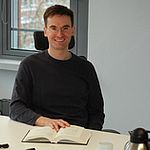The spectrum of Laplace and Dirac operators is known to be intriguingly connected with the geometry of a manifold.
Analytic \(L^2\)-invariants apply von Neumann algebra techniques to extract the spectral information even if the space has cusps and ends. The project studies these invariants and compares them to combinatorial \(L^2\)-invariants of suitable compactifications of the manifold in a variety of situations:
- finite volume locally symmetric spaces,
- asymptotically hyperbolic manifolds and
- finite volume Kähler hyperbolic manifolds.
In these cases questions raised by Gromov, Chern-Singer and Hopf are not yet settled and the project should lead to new partial answers. It will be necessary to transfer well-established methods to a non-compact setting, e.g., proving an \(L^2\)-index theorem for manifolds with hyperbolic cusp ends.
Also twisted versions of \(L^2\)-invariants have come into focus. For \(L^2\)-torsion, the project intends to initiate a study of these twisted versions all at once: as a function on representation varieties. This should relate to similar functions like the volume functions for representations in \(SO(n,1)\).
Publications
For every Lie group G, we compute the maximal n such that an n-fold product of nonabelian free groups embeds into G.
Related project(s):
18Analytic L2-invariants of non-positively curved spaces
We prove that the sign of the Euler characteristic of arithmetic groups with CSP is determined by the profinite completion. In contrast, we construct examples showing that this is not true for the Euler characteristic itself and that the sign of the Euler characteristic is not profinite among general residually finite groups of type F. Our methods imply similar results for L2-torsion as well as a strong profiniteness statement for Novikov--Shubin invariants.
Related project(s):
18Analytic L2-invariants of non-positively curved spaces58Profinite perspectives on l2-cohomology
We explain how the construction of the real numbers using quasimorphisms can be transformed into a general method to construct the completion of a field with respect to an absolute value.
| Journal | P-Adic Numbers Ultrametric Anal. Appl. |
| Volume | 11 |
| Pages | 335 - 337 |
| Link to preprint version | |
| Link to published version |
Related project(s):
18Analytic L2-invariants of non-positively curved spaces
We define a variant of Benjamini-Schramm convergence for finite simplicial complexes with the action of a fixed finite group G which leads to the notion of random rooted simplicial G-complexes. For every random rooted simplicial G-complex we define a corresponding ℓ2-homology and the ℓ2-multiplicity of an irreducible representation of G in the homology. The ℓ2-multiplicities generalize the ℓ2-Betti numbers and we show that they are continuous on the space of sofic random rooted simplicial G-complexes. In addition, we study induction of random rooted complexes and discuss the effect on ℓ2-multiplicities.
| Pages | 20 |
| Link to preprint version |
Related project(s):
18Analytic L2-invariants of non-positively curved spaces
We compute the p-central and exponent-p series of all right angled Artin groups, and compute the dimensions of their subquotients. We also describe their associated Lie algebras, and relate them to the cohomology ring of the group as well as to a partially commuting polynomial ring and power series ring. We finally show how the growth series of these various objects are related to each other.
Related project(s):
18Analytic L2-invariants of non-positively curved spaces
The purpose of this article is to define and study new invariants of topological spaces: the p-adic Betti numbers and the p-adic torsion. These invariants take values in the p-adic numbers and are constructed from a virtual pro-p completion of the fundamental group. The key result of the article is an approximation theorem which shows that the p-adic invariants are limits of their classical analogues. This is reminiscent of Lück's approximation theorem for L2-Betti numbers.
After an investigation of basic properties and examples we discuss the p-adic analog of the Atiyah conjecture: When do the p-adic Betti numbers take integer values? We establish this property for a class of spaces and discuss applications to cohomology growth.
Related project(s):
18Analytic L2-invariants of non-positively curved spaces58Profinite perspectives on l2-cohomology
In this note we refine examples by Aka from arithmetic to S-arithmetic groups to show that the vanishing of the i-th ℓ²-Betti number is not a profinite invariant for all i≥2.
Related project(s):
18Analytic L2-invariants of non-positively curved spaces
Given an S-arithmetic group, we ask how much information on the ambient algebraic group, number field of definition, and set of places S is encoded in the commensurability class of the profinite completion. As a first step, we show that the profinite commensurability class of an S-arithmetic group with CSP determines the number field up to arithmetical equivalence and the places in S above unramified primes. We include some applications to profiniteness questions of group invariants.
Related project(s):
18Analytic L2-invariants of non-positively curved spaces
Team Members
Prof. Dr. Roman Sauer
Project leader
Karlsruher Institut für Technologie
roman.sauer(at)kit.edu


